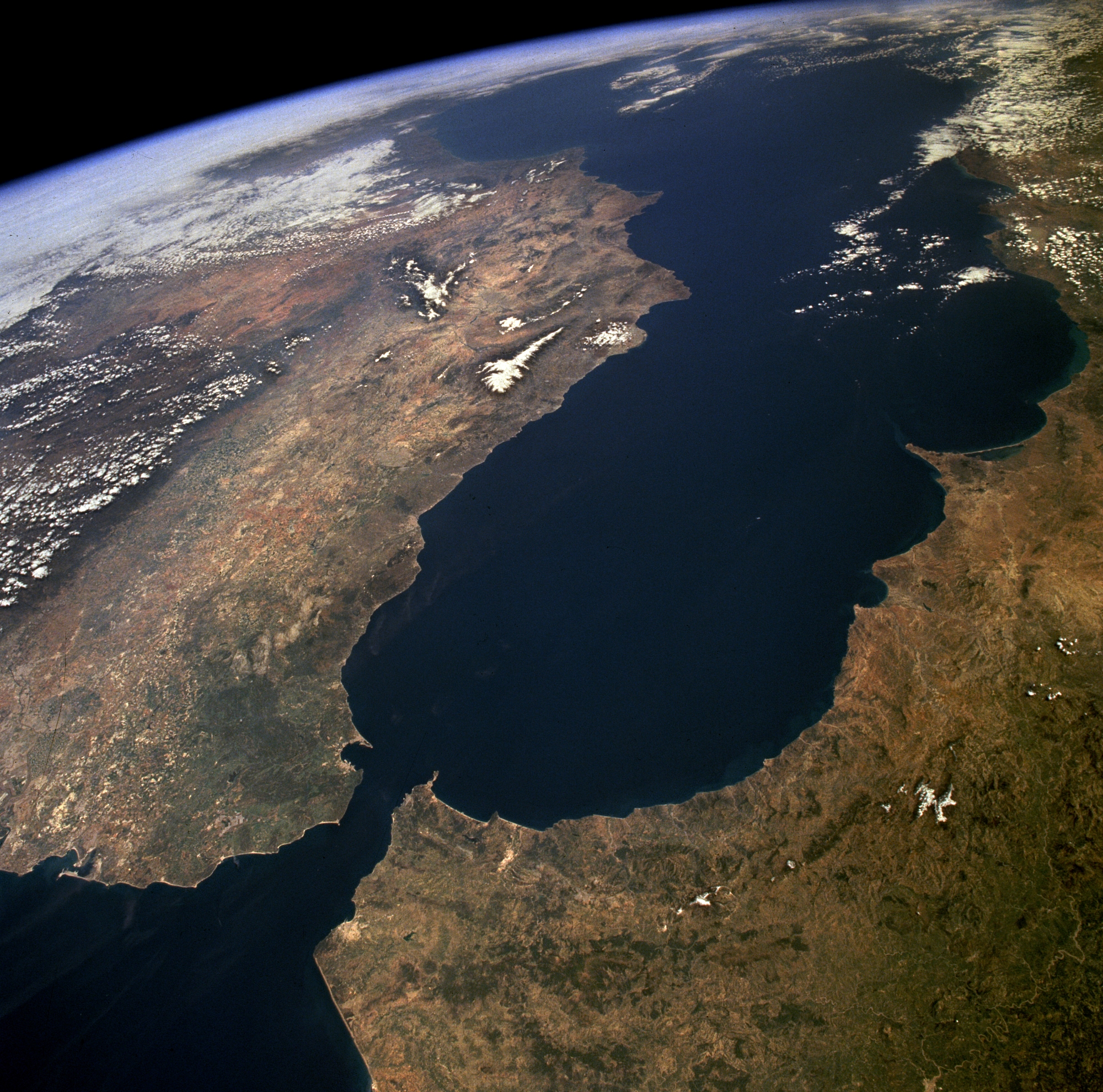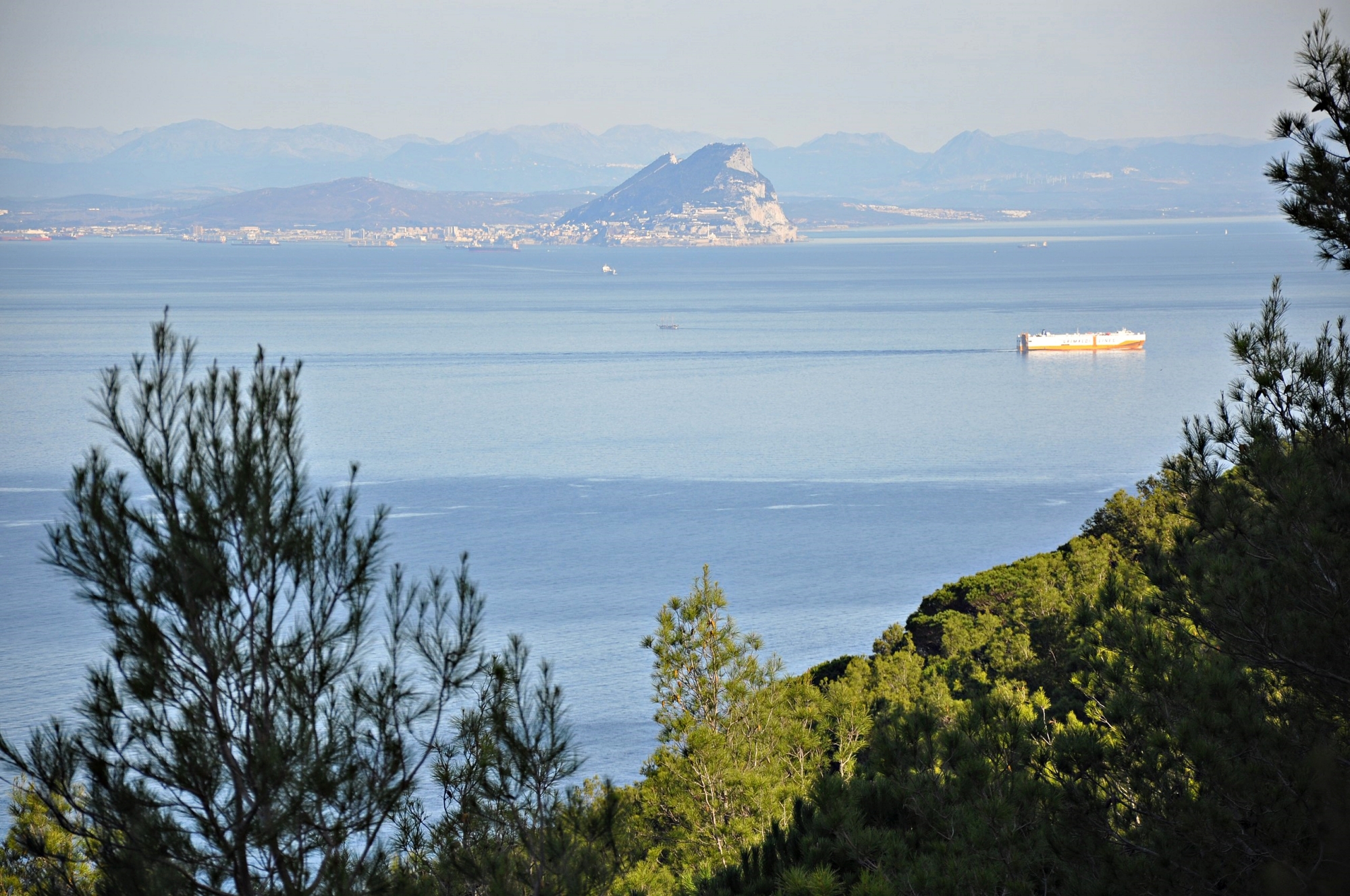Years later, the idea of building an undersea link to reach Africa by rail has returned. Spain and Morocco are just over 29 km apart. In contrast, the distance between the nearest ports is less than 16 nautical miles. The undersea tunnel will improve traffic between the two shores of the Strait of Gibraltar, which will be crucial during the 2030 World Cup, when Spain, Portugal and Morocco will host the event.
Today, the most popular means of transport between Spain and Morocco are ships and planes. The idea of an undersea tunnel that would carry a train was first put forward in 1979. The bold vision was inspired by the Eurotunnel under the English Channel, officially opened in 1994 between the UK and France.
The Strait of Gibraltar. Photo by PookieFugglestein, CC0, via Wikimedia Commons
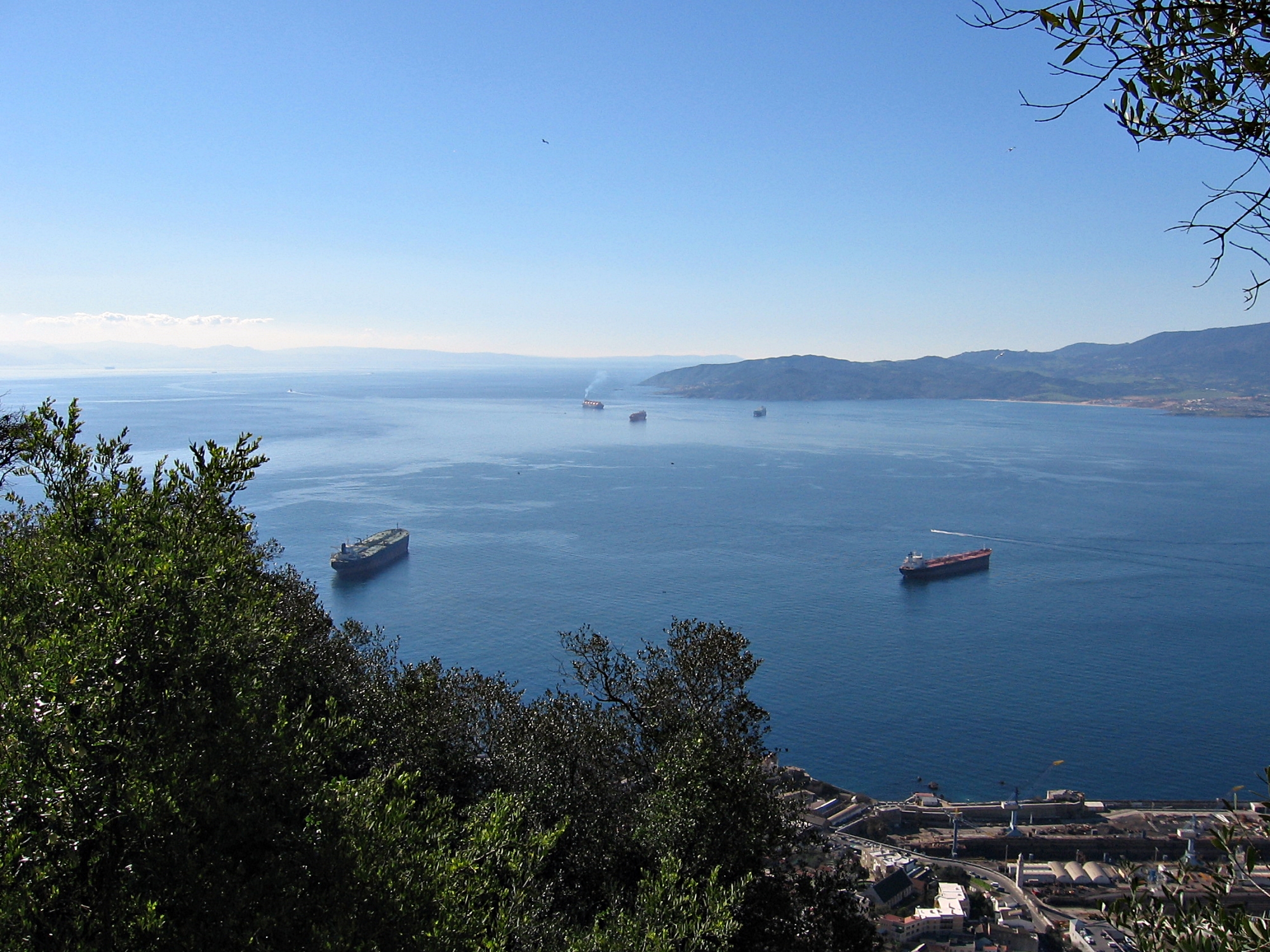
Initial construction cost estimates put the cost at €6 billion. The 27-kilometre-long transcontinental tunnel could connect the European high-speed rail network with North Africa as early as 2030. That is when Spain, Portugal and Morocco will host the World Cup. The tunnel would cross the Strait of Gibraltar from Tarifa in Spain to Tangier in Morocco.
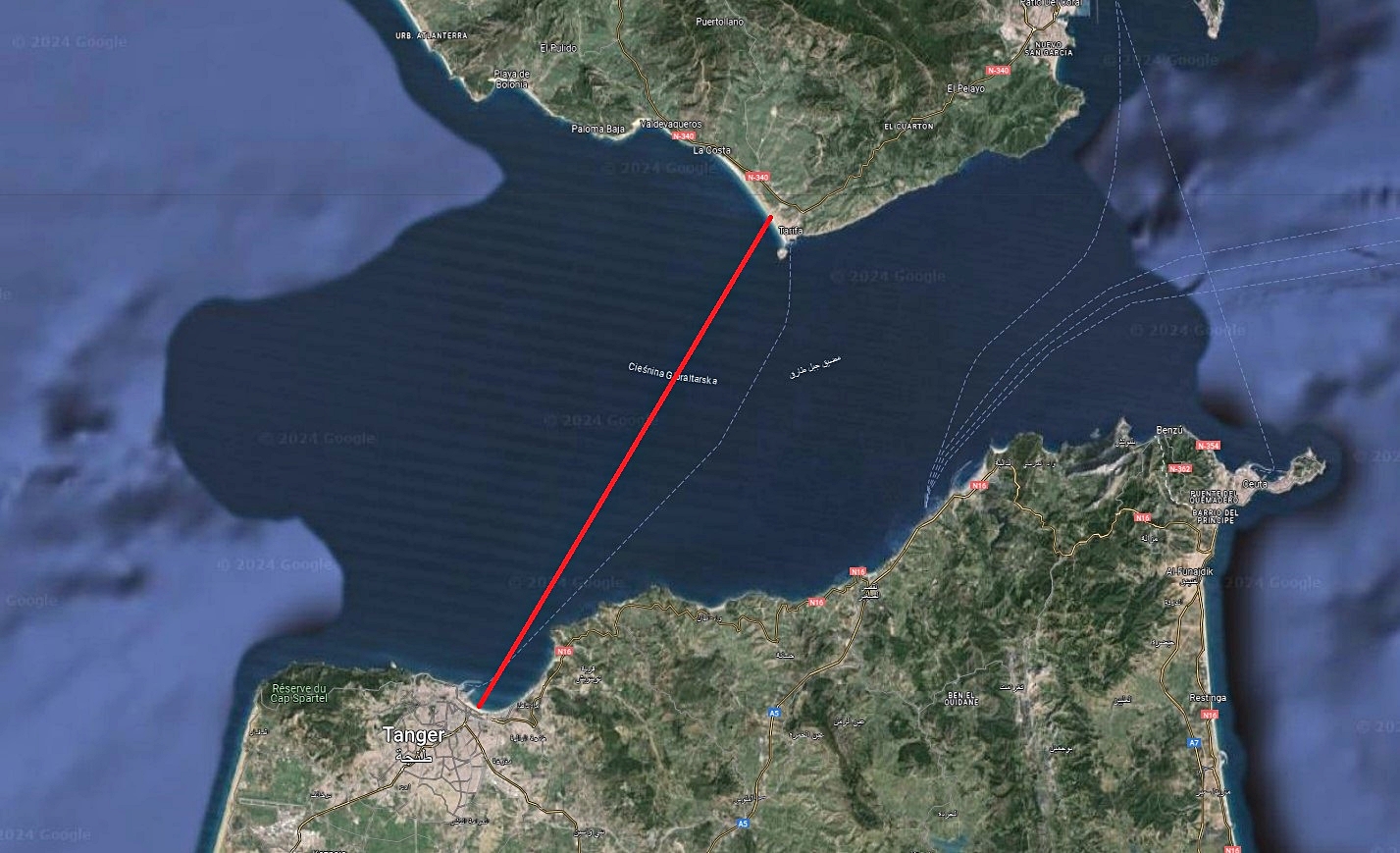
Currently, flights from Madrid to Casablanca take around two hours. A rail journey under the Strait of Gibraltar on the same route would take a scheduled five and a half hours. The underwater tunnel would also enable high-speed rail services, linking existing Spanish lines to the Al Boraq route in Morocco, which opened in 2018. Trains travel at 300 km/h on this route.
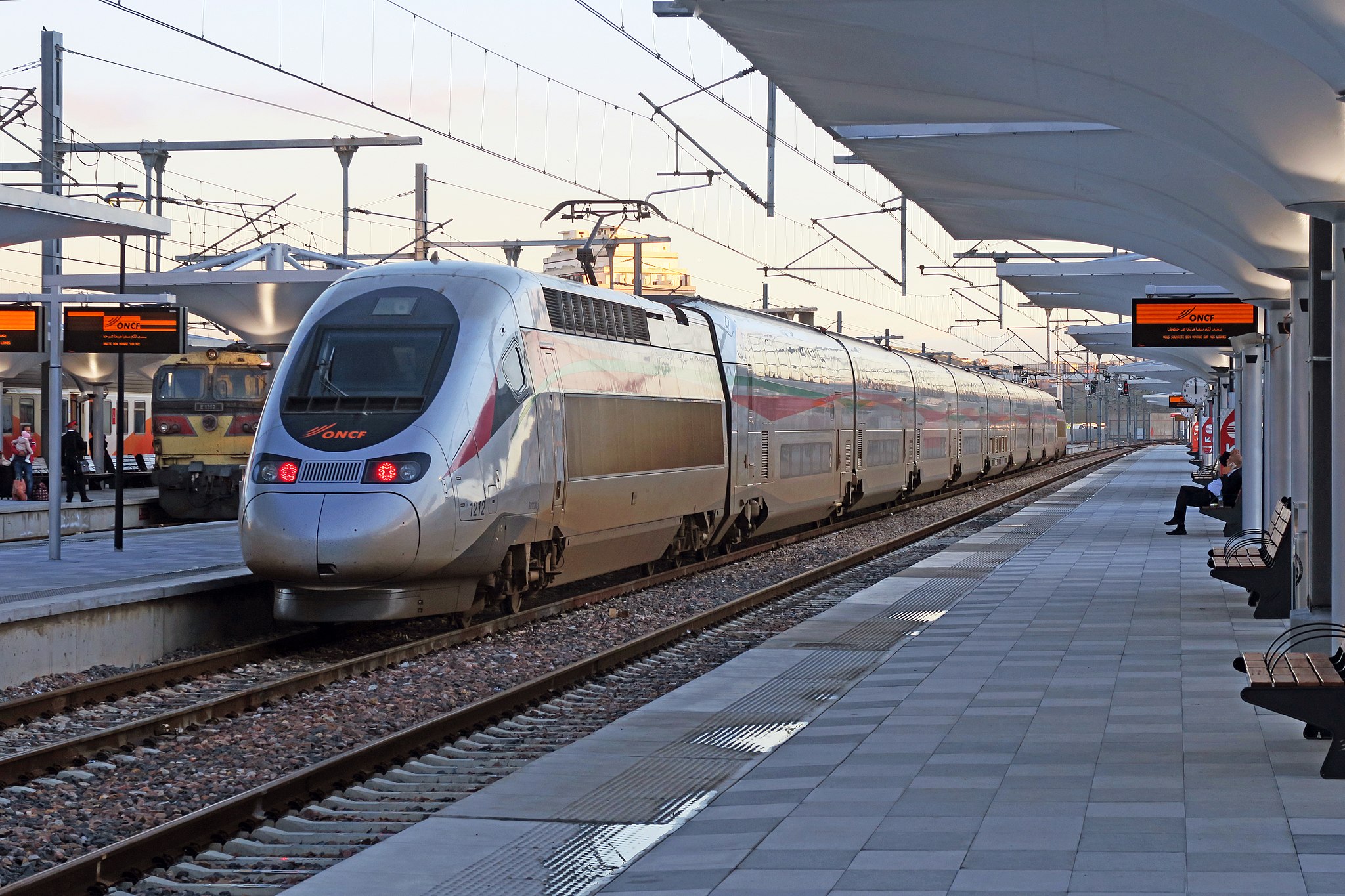
Spanish Transport Minister Raquel Sanchez has indicated that the project is intended to be a boost to maximise relations between Europe and Africa. The investment is expected to receive funding from the European Union. Strategic planning is currently underway. One of the logistical challenges that may stand in the way of the tunnel construction is the regular seismic activity in the strait area.
If the investment comes to fruition, the new crossing could benefit more than 12.8 million passengers per year. It would also benefit trade between the two continents and have a positive ecological impact.
Source: independent.co.uk, national-geographic. co.uk
See also Rail | Urbanism | Public transport | Spain | Africa



